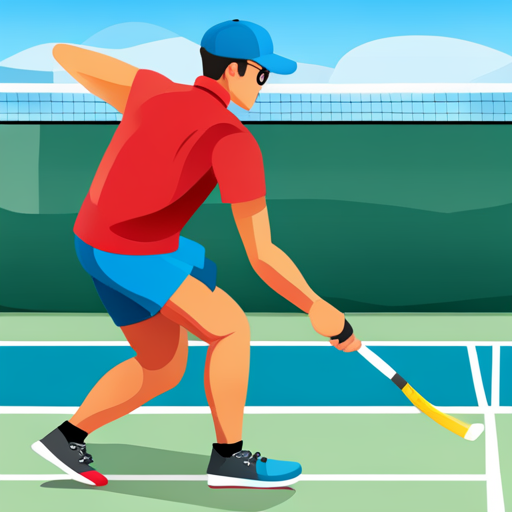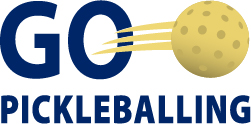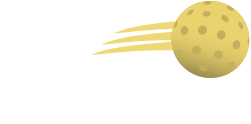The non-volley zone, also known as the kitchen, is a key component of pickleball gameplay. Understanding and following the non-volley zone rules is crucial for fair play and maintaining a competitive environment. In this blog post, we will delve into the non-volley zone rules, exploring each rule in detail and providing valuable insights for players of all skill levels. Whether you’re new to pickleball or looking to enhance your understanding of the game, this guide will help you master the intricacies of the non-volley zone. Let’s dive in!
Shop Pickleball GearTable of Contents:
- Rule 9.A: All Volleys Must Be Initiated Outside the Non-Volley Zone
- Rule 9.B: Fault if the Volleying Player or Anything in Contact with Them Touches the Non-Volley Zone
- Rule 9.C: Fault if the Player’s Momentum Causes Contact with Anything Touching the Non-Volley Zone
- Rule 9.D: Returning after Contact with the Non-Volley Zone
- Rule 9.E: Non-Volley Zone Entry Restrictions
- Rule 9.F: Entering the Non-Volley Zone Before or After a Bounced Ball
- Rule 9.G: Staying in the Non-Volley Zone after Hitting a Bounced Ball
- Rule 9.H: Returning the Ball while Partner Remains in the Non-Volley Zone
All Volleys Must Be Initiated Outside the Non-Volley Zone – Rule 9.A
One of the fundamental non-volley zone rules is that all volleys must be initiated outside the non-volley zone. This means that players should make contact with the ball after stepping outside the designated area. However, players using wheelchairs are allowed to have their front wheels touch the non-volley zone during a volley.
Fault if the Volleying Player or Anything in Contact with Them Touches the Non-Volley Zone – Rule 9.B
To ensure fair play, it is considered a fault if the volleying player or any object in contact with them touches the non-volley zone. This includes the swing, follow-through, and momentum of the volley. Players using wheelchairs are allowed to have their front wheels touch the non-volley zone.
Understanding the Act of Volleying – Rule 9.B.1
The act of volleying the ball encompasses the entire motion, from the swing to the follow-through and the momentum generated. It is important to maintain a clear understanding of what constitutes a volley to avoid faults.
Paddle Contact with the Non-Volley Zone – Rule 9.B.2
If the paddle touches the non-volley zone at any point during the volley motion, regardless of ball contact, it is considered a fault. Players must exercise caution and ensure that their paddle does not come into contact with the non-volley zone.
Fault if the Player’s Momentum Causes Contact with Anything Touching the Non-Volley Zone – Rule 9.C
During the act of volleying, it is a fault if the player’s momentum causes them to contact anything touching the non-volley zone, including their partner. However, players using wheelchairs are allowed to have their front wheels touch the non-volley zone.
Fault Even if the Ball Becomes Dead – Rule 9.C.1
Even if the ball becomes dead before the player makes contact with the non-volley zone, it is still considered a fault. Players must exercise caution and ensure they do not violate this rule.

Returning after Contact with the Non-Volley Zone – Rule 9.D
If a player has touched the non-volley zone for any reason, they cannot volley a return until both feet have made contact with the playing surface completely outside the non-volley zone. For players using wheelchairs, the rear wheels must make contact with the playing surface outside the non-volley zone.
Non-Volley Zone Entry Restrictions – Rule 9.E
Players are allowed to enter the non-volley zone at any time, except when volleying the ball. This rule ensures fair play and avoids violations of the non-volley zone rules.
Entering the Non-Volley Zone Before or After a Bounced Ball – Rule 9.F
Players can enter the non-volley zone before or after returning a ball that has bounced. This rule provides flexibility and allows players to position themselves strategically on the court.
Staying in the Non-Volley Zone after Hitting a Bounced Ball – Rule 9.G
There is no violation if a player remains inside the non-volley zone after hitting a ball that has bounced. Players can take advantage of this rule to stay positioned in the non-volley zone for better court coverage.
Returning the Ball while Partner Remains in the Non-Volley Zone – Rule 9.H
Players can return the ball while their partner remains in the non-volley zone. This rule allows for efficient teamwork and coordinated gameplay.
Mastering the non-volley zone rules is essential for every pickleball player. By understanding and adhering to these rules, players can ensure fair play and maintain a competitive edge. Whether you’re a beginner or an experienced player, following the non-volley zone rules will greatly enhance your gameplay and overall pickleball experience. So, step into the non-volley zone with confidence, knowing that you are well-equipped with the knowledge to navigate its intricacies and excel on the pickleball court.



